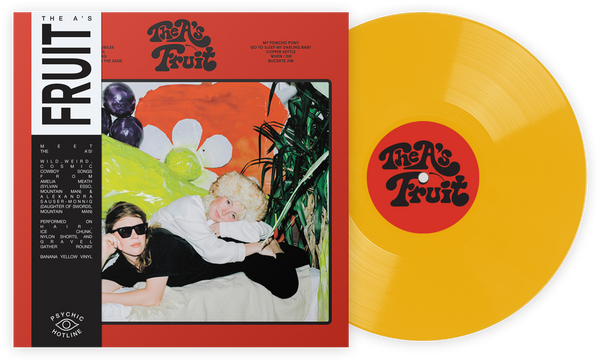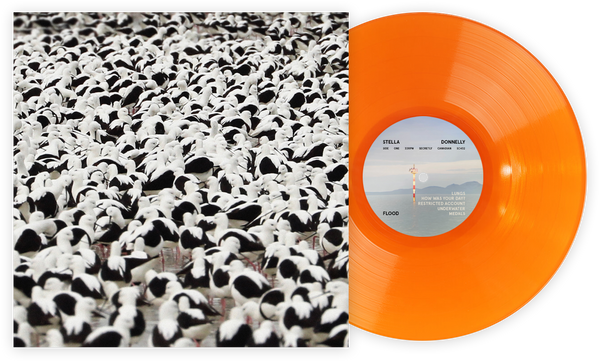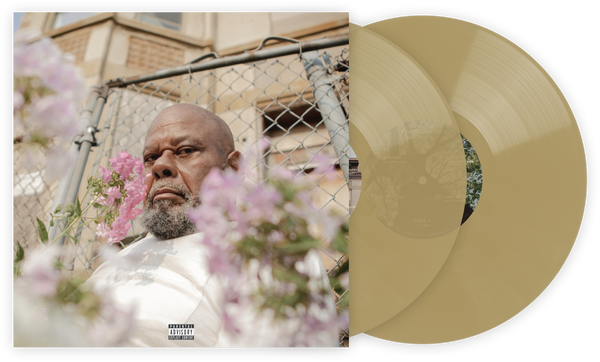En historie om statisk sampling i rapmusik
Hvorfor elsker rapproducenter lydmæssige ufuldkommenheder så meget?
"Jeg har haft meget erfaring de sidste par år med at arbejde med Pete Rock, og jeg sværger, at han bruger knitrelyden på et sample næsten som percussion," siger Dan The Man, en hip-hop-ingeniør hvis nylige kreditter inkluderer mastering af Sean Prices posthume Imperious Rex album, sammen med meget af Duck Down-labelens robuste rap-katalog. Arbejdende fra Pro Town USA-studierne i Manhattan, New York City, rhapsodiserer Dan over den måde, Pete Rock—en anerkendt producer, der studerede under golden age-ikonet Marley Marl, før han kom frem i begyndelsen af '90'erne med en række klassiske sange, der var baseret på sjældne soul-, jazz- og funk-samples—gør de lydmæssige ufuldkommenheder på en vinylplade til en vital del af stoffet i en hip-hop-sang. "Pete får knitrelyden på pladen til at loope, så den tilføjer til rytmen i sangen," forklarer Dan The Man.
Enhver vinyl elsker kender den omgivende statiske lyd, knitrelyde og pop, der sparker i gang, når en nål rammer indgangen på en plade. Dem med audiophile tendenser vil måske gøre deres bedste for at udrydde disse lydmæssige imperfectioner - men i hip-hop verden er de blevet elskede dele af ikoniske projekter. De La Souls første to samplede album er sprøjtet i knitrelyde (“Plug Tunin'” alene er som en rap vals ledet af statisk); Wu-Tang Clans debutalbum er gennemsyret af ambient støj fra VHS kung-fu bånd og 60'er soul plader. Jay-Z's gennembrudsradiotrack, “Ain’t No Nigga,” understøttes af summen fra “Seven Minutes Of Funk” nummeret, det sampler fra, mens det støvede mumlende, der løber igennem Nas’ Pete Rock-producerede Illmatic nummer "The World Is Yours" hjælper med at formidle en nostalgisk stemning. Ligesom hip-hops skabelseshistorie involverer DJs, der tager eksisterende sange og vender små segmenter af musikken til noget nyt og friskt, er disse lydmæssige slitager i hænderne på hip-hop producenter blevet til en dyd - og den vedvarer selv i en verden, hvor sampling af MP3’er fra YouTube ormehuller bliver stigende almindeligt.
Onra er en producer baseret i Paris, der fandt anerkendelse med sin Chinoiseries trilogi, der blev lanceret i 2007. Disse instrumentale hip-hop sange - som nu tæller 100 numre i alt - bruger kinesiske vinyl plader som en unik samplekilde. Ideen blev tændt af en rejse til det fjerne Østen, hvor Onras beat jagtinstinkter kom i spil. Vinyl lageret, Onra samlede på sine orientalske rejser, var langt fra mint-tilstand - men sampling af det tykke lag af støvet ambiance bidrager til den mystiske stemning af Chinoiseries oplevelsen.
“Snavset gamle imperfectioner,” er hvordan Onra karakteriserer den statiske og knitrende lyd, der er kommet ind i hans færdige numre. “Det er noget, der vækker nostalgi og melankoli.” Et nummer som "Memories From 1968" underbygger denne ide, da en skramlet guitar loop kæmper med hærgende knitrende, mens "Thank You Very Much" defineres af bølger af statisk, der kryber over de andre elementer i nummeret. Under Onras kontrol har overflødigheden af samplet vinylambiance den effekt, at det føles som om, du er indstillet på en eksotisk radiostation, hvor dialen er skrøbeligt placeret i lige den rigtige position til at modtage en udsendelse, der blidt kærtegnes af interferens.
Effektiv som den er, siger Onra, at teksturen af Chinoiseries kom ud af nødvendighed snarere end design: “Det var aldrig en bevidst beslutning. Jeg måtte bare bruge, hvad jeg havde. Da jeg først spillede nogle af demoerne for disse numre for folk, troede de, jeg var skør for at holde det så råt.”
Fra upstate New York kender duoen Doppelgangaz alt til, hvordan statisk kan give en sang en rå klang - men i ét tilfælde har graden af statisk splittet fansene. Bestående af MC'erne og producenterne EP og Matter Ov Fact, har gruppen samlet en following, der kalder sig Shark Nation; de mest dedikerede af sekten dukker op til koncerter klædt i gruppens signatur sorte hættekapper og rapper med på sange, der blander skøre medicinske termer med gourmet madreferencer. En betydelig del af Dopp Gangs backkatalog har en skramlet patina: Den uhyggelige "Suppository" rasler med pops, der sprutter i mixet; "H.I.T.H." kombinerer simmerende statisk med en melodisk melodi, der minder om en caribisk gospel sang; “I’ve Been” bruger stræk af blidt bølgende lydfuzz for at matche de introspektive tekster. Men "Skin Yarmulke," fra 2013's HARK, tog det til et punkt, hvor det er blevet gruppens mest delte udgivelse: Nogle gange er det som om, den larmende og hæmmende statiske lyd overfalder resten af den slanke rytme.
"Du er enten til de beroligende ASMR vibes af den høje, dominerende statiske lyd, eller også er du ikke," siger EP og refererer til Autonomous Sensory Meridian Response, en tilstand, der opstår, når du oplever prikken ned ad ryggen. "De der ikke er, er bestemt ikke bange for at fortælle dig, hvor meget din sang suger - og ikke baseret på teksten eller beatsene, kun baseret på den statiske lyd. Folk har sagt, de ikke engang kan høre på det. Men jeg elsker, at vi har en sang, der skaber så meget kontrovers - jeg får mit kick ud af det."
Doppelgangaz hævder, at de har "nul erfaring" med at rydde op i den lydmæssige forvanskning fra de plader, de sampler. Det er en situation, de har omfavnet. "En uåbnet vinyl vil helt sikkert give os mindre statisk, men vores yndlings fra dollar-bunken har typisk et højere statisk til musikforhold,” forklarer EP.
Dirty Art Club er en producer fra North Carolina, der er enig i denne holdning. Hans seneste projekt, Basement Seance, bruger evocative lag af statisk og fuzz til at fremkalde en drømmende stemning. “De lyde bringer også noget musikalsk til en sang uden at være musikalske i sig selv,” siger han. “Støj er nogle gange en stor del af en sangs flow og gentagelse, afhængig af hvordan den sidder rytmisk, baseret på hvordan samples blev skåret og arrangeret.”
Når producenter omfavner fejlene ved vinylpladen, de sampler, tilføjer det også et stempel af individualitet til den færdige beat. Som Dan The Man påpeger, vil hver kopi af en vinylplade være fysisk forskellig: "Hvis jeg sampler en Diana Ross plade, og fire andre mennesker sampler en Diana Ross plade, vil den statiske eller knitrende lyd ikke være den samme, fordi det hele handler om slidene på pladen. Dette hjælper med følelsen og sjælen af en beat."
Når han er isoleret i studiet med en kunstner, siger Dan The Man, at nogle kunder beder ham om at fjerne et sample. Han siger, der er EQing-metoder, der kan bruges "til at hjælpe med at filtrere de høje frekvenser, så knitrelyde og statisk ikke vil være der," og tilføjer, at det digitale software Pro Tools og Logic inkluderer plug-ins for at opnå en lignende effekt. Fra et ingeniørperspektiv advarer han også en nyere generation af producenter, der foretrækker at sample fra YouTube-filer, om at “kvaliteten slet ikke er god, og der er en funky ting, der sker i de høje frekvenser, og det lyder bare dårligt.” Men han siger også, at mange producenter “beder om, at den summen og knitrene” bevares, især når et sample er blevet gen-spillet af instrumenter i studiet; i de tilfælde kan det faktisk at tilføje noget lydforvrængning hjælpe med at få det til at føles “mere som en original plade.” (Dan The Man tilføjer, at nogle moderne synthesizere endda har en plade knitre-lydeffekt.) I sidste ende fortæller han, at det er en bedømmelse, hvor meget statisk der slippes igennem til en slutnummer: “Fjerner dette eller tilføjer det til pladen?”
Idéen om, at lydmæssige imperfectioner faktisk tilføjer noget ekstra til en hip-hop nummer, har vedholdt sig selv i digitale musiktider med sanitær. Som EP siger, “Jeg føler bare, det er tekstur og et andet indflydelsesrigt lag, der spiller en vigtig rolle i at sætte stemningen. Det kan enten give en virkelig mørk fornemmelse eller en dejlig varme.” At tilføre en sang de lydmæssige fejl og quirks fra den originale samplekilde minder også lytteren om, at der er en historie og arv bag den nye sang, der kommer fra producerens engagement i at samle vinyl. At høre det kære pop fra et burst af statisk, før beatet sparker ind, og MC’en begynder at rime, forstærker musikken som en håndgribelig og følelsesladet oplevelse. I sin forbindelse mellem hans dage som fan og producent husker Dirty Art Club at have ejet en “lille bærbar pladeafspiller” som barn og gentagne gange at have hørt et lille antal klassiske soul sange. “Så jeg blev straks fascineret af brugen af samples, da jeg fik øjnene op for rap i de tidlige 90'ere,” siger han. “Jeg føler stadig sådan, når jeg hører et beat komme på, der er mættet med vinylstøj.”
Phillip Mlynar skriver om den hellige treenighed af rappere, katte og mad. Han blev engang fuld på pintre af sort øl sammen med MF Doom i journalistikens tjeneste.








